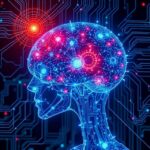Artificial intelligence (AI), particularly generative AI, is rapidly reshaping the workplace landscape, presenting both opportunities and challenges for current and future jobs. Since the launch of ChatGPT in late 2022, generative AI has gained significant public and corporate attention for its ability to process and generate text, images, code, and even biological data patterns, driving a surge in business interest to integrate AI for productivity gains and operational efficiency.
Impact on Jobs and Productivity
Generative AI is expected to transform work in several key ways:
Increased Productivity:Workers using generative AI tools report saving a meaningful amount of time, with studies indicating about a 5.4% reduction in work hours for certain tasks, translating to roughly a 1.1% productivity increase overall. McKinsey estimates that AI could add $4.4 trillion in productivity growth potential globally through corporate applications[1].
Shift in Job Roles: Rather than simply replacing jobs, AI is changing the nature of work. Routine, repetitive tasks are increasingly automated, freeing knowledge workers to focus on higher-level activities such as strategic decision-making, creative problem-solving, and critical thinking. This evolution means that while some job functions may diminish, demand for roles requiring technical skills, creativity, and complex judgment, particularly in STEM, business, and legal fields, is projected to grow substantially. McKinsey projects a 23% increase in STEM jobs by 2030 fueled by digital transformation and AI.
Skills Equalization and Upskilling Needs: AI has the potential to act as a skills equalizer, helping less experienced employees perform at higher levels. However, the rapid pace of AI development means both individuals and organizations must engage in strategic upskilling to keep pace with changing job requirements and leverage AI effectively.
Adoption Challenges and Workforce Sentiments
Despite executive enthusiasm—where urgency to deploy AI has increased sevenfold in six months—two-thirds of desk workers are not actively using AI tools. Research from Salesforce’s Slack Workforce Lab uncovers varied human attitudes toward workplace AI, identifying five “personas” ranging from maximalists (enthusiastic users) to rebels (who see AI as a threat) and observers (cautiously waiting). This diversity highlights a trust gap: only about 7% of workers fully trust AI currently, and concerns around data security, privacy, and AI’s accuracy are significant barriers to adoption.
Managerial trust plays a critical role—employees who feel trusted by their managers are twice as likely to adopt AI tools. Transparency, clear organizational policies, and education about AI use can increase adoption rates, with firms that provide safe usage guidelines seeing nearly six times greater employee engagement with AI.
Leadership and Organizational Strategy
AI’s integration demands thoughtful leadership. Many companies have invested in advanced AI systems but have not adequately prepared their staff to use them effectively—a metaphorical “Ferrari without driving lessons.” Leaders must balance rapid experimentation with caution, especially as the technology is still evolving and sometimes unreliable. Overenthusiastic cost-cutting based on AI adoption risks destabilizing workforces, so many experts urge circumspection regarding headcount reductions.
Organizations are encouraged to:
– Develop clear, transparent AI policies and guardrails for ethical and practical use.
– Invest in upskilling and reskilling programs to help employees adapt to new workflows.
– Foster a culture of trust and open communication to address fears and misconceptions.
– Focus AI deployment on augmenting human creativity and judgment rather than simple automation.
The Future Outlook
AI is unlikely to eliminate all jobs but will redefine how work is done, emphasizing human-AI collaboration. Knowledge work will evolve from manual content creation toward guiding and interpreting AI-generated insights. While the technology is expensive to develop and currently offered at low cost to encourage adoption, companies must carefully assess where AI can truly add value instead of following hype blindly.
The workplace transformation brought by AI is the most significant shift in decades, and its success depends on how well organizations manage the human side of this change—trust, education, and transparent governance will be as crucial as technological innovation.


